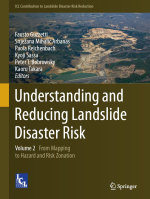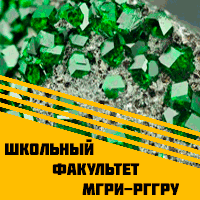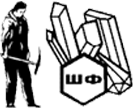Добрый день, Коллеги. Важное сообщение, просьба принять участие. Музей Ферсмана ищет помощь для реставрационных работ в помещении. Подробности по ссылке
Understanding and reducing landslide disaster risk. Volume 2. From mapping to hazard and risk zonation / Понимание и снижение риска оползневых катастроф. Том 2. От составления карт к зонированию опасностей и рисков
More landslides can be expected as climate change exacerbates rainfall intensity. The long-term trend of the last 40 years has seen the number of major recorded extreme weather events almost double, notably floods, storms, landslides, and wildfires. Landslides are a serious geological hazard. Among the host of natural triggers are intense rainfall, flooding, earthquakes or volcanic eruption, and coastal erosion caused by storms that are all too often tied to the El Niсo phenomenon. Human triggers including deforestation, irrigation or pipe leakage, and mine tailings, or stream and ocean current alteration can also spark landslides. Landslides can also generate tsunamis, as Indonesia experienced in 2018. Globally, landslides cause significant economic loss and many deaths and injuries each year. Therefore, it is important to understand the science of landslides: why they occur, what factors trigger them, the geology associated with them, and where they are likely to happen. Landslides with high death tolls are often a result of failures in risk governance, poverty reduction, environmental protection, land use and the implementation of building codes. Understanding the interrelationships between earth surface processes, ecological systems, and human activity is the key to reducing landslide risk.
The Sendai Framework for Disaster Risk Reduction, the global plan to reduce disaster losses adopted in 2015, emphasizes the importance of tackling these risk drivers through improved governance and a better understanding of disaster risk. One important vehicle for doing that is the Sendai Landslide Partnerships 2015–2025 for global promotion of understanding and reduction of landslide risk facilitated by the International Consortium on Landslides (ICL) and signed by the leaders of 22 global stakeholders, including the UN Office for Disaster Risk Reduction (UNDRR), during the Third UN World Conference on Disaster Risk Reduction in Sendai, Japan. The Sendai Landslide Partnerships—featured on the Sendai Framework Voluntary Commitments online platform—helps to provide practical solutions and tools, education, and capacity building, to reduce landslide risks. The work done by the Sendai Partnerships can be of value to many stakeholders including civil protection, planning, development and transportation authorities, utility managers, agricultural and forest agencies, and the scientific community. <...>




